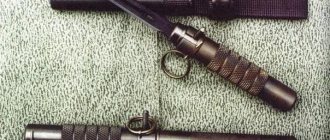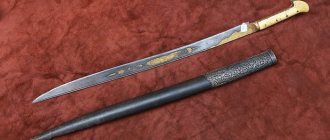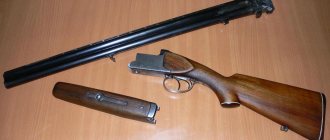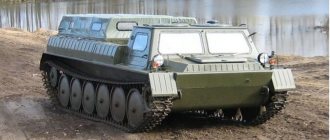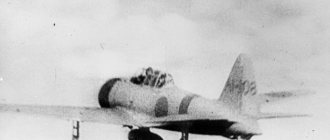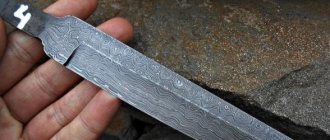Everything has its expiration date, even steel. Over time, it wears out, rusts and breaks down. People have long been thinking about how to extend the service life of steel weapons that were expensive at that time and how to make them more durable and resistant to changes over time. After thousands of years, steel manufacturing technologies such as the production of Damascus and damask steel have reached our time.
The secret of casting and making weapons (and in our time these are mainly knives) from these most resistant and most durable metals has been passed down from generation to generation, from master to master. Today, even the use of new technologies in metal casting cannot surpass the quality and beauty of handmade knives made of Damascus and damask steel. Real damask and Damascus knives are of great value to both collectors and ordinary consumers, from hunters to professional chefs.
When and how did damask knives originate?
During his campaign in India, Alexandra the Great especially noted the quality of the knives and combat sabers of the Indian noble warriors. Their blades easily cut through not only armor, but also weapons, and the sharp blades of their knives ripped through chain mail like butter. These were the first mentions of damask knives by Indian craftsmen. The unusual metal of Indian foundries was famous not only for its hardness, but also for its flexibility. Some craftsmen, using copper sulfate, which was added to the steel during processing, obtained white, green and blue blades.
Do not confuse damask steel with Damascus steel; these are completely different metal casting technologies. Damascus steel is more flexible than damask steel, although it is as strong as damask steel. Those who think that the appearance of blades differs from ordinary ones in that they have patterns depicted on them are mistaken. Damask steel casting technology makes it impossible to depict designs on the blade. The main difference between the two types of rare steels can only be determined in practice by an experienced craftsman or an experienced hunter.
As for the appearance of damask steel in Rus', it must be said that foundry as a craft existed in our country back in the 9th-10th centuries. Steel in Rus' was famous for its strength; not only weapons, but also household items were made from it. During the development of industry (XVII-XIX centuries), steelmaking in Russia, namely in Tula, Nizhny Tagil, Verkh-Isetsk, Zlatoust and other centers, made a powerful leap forward. It was at the Zlatoust plant that metallurgist P. Anosov, after much experimentation, found a method for producing damask steel. For many centuries before him, foundry masters tried in vain to learn the secret of making a blade that could easily cut through any steel and not become dull. After the discovery of Peter Anosov, it turned out that damask steel is just ordinary carbon iron, which, after a special method of crystallization, cooling and a certain set of materials, acquired unique qualities.
From time immemorial, damask knives have been famous for their ability to not become dull for a long time and remain sharp even after several years of use. Their ability to not succumb to external influences made them indispensable in hunting. Modern hunting knives made of hand-forged damask steel are in many ways superior to those made using modern technologies.
Comparative testing of knives made of damask steel and monosteel
The testing was carried out by the St. Petersburg knife club; the organization of the event, as for the first time, was taken over by Alexander (aka SashaAn).
The purpose of the testing was to compare the durability of the cutting edge of damask steel and monosteel knives when cutting highly elastic material (rope). Some difficulty was caused by the selection of monosteel knives for the test. It turned out that the test participants did not have so many of them. The company's knives were recognized as worthy candidates: Benchmade Rant Bowi and DPT . The third was the Finnish Marttiini knife made of carbon steel. Damascus steel was represented by the prize-winning knives of the last test (carbon and stainless steel damask steel by I. Pampukha) and two new participants: carbon damask steel by L. Arkhangelsky and S. Lunev (forged by I. Pampukha).
In the first test, S. Lunev’s damask steel knife showed one of the worst results; it was interesting how the second knife would perform. This time the knife made of stainless damask steel by I. Pampukha was sharpened to 25 degrees according to Lansky, actually 20 degrees (in the first test the sharpening angle was 30 degrees according to Lansky).
Five people were able to come for testing: Igor (aka Mikhalych), Ivan (aka Ivan), Alexander (aka SashaAn), Dmitry (aka Razor), Sergey (aka Sleeper).
The following knives participated in the testing:
| Number | Blade material | Blacksmith/manufacturer | Blade length (mm) | Thickness at the butt (mm) | RK length (mm) | Thickness of leads (mm) |
| 1 | N690 | Benchmade Rant Bowie | 100 | 3,7 | 75 | 0,8 |
| 2 | 440C | Benchmade Rant DPT | 113 | 3,6 | 90 | 0,6-0,7 |
| 3 | Carbon steel | Marttiini | 100 | 3 | 80 | 0 |
| 4 | Carbon damask steel | L. Arkhangelsky | 105 | 3,5 | 85 | 0,55 |
| 5 | Metal ceramics by V. Petrika | A. Kukin | 120 | 4,5 | 90 | 0,5 |
| 6 | Carbon damask steel | S. Lunev (blade forged by I. Pampukha) | 127 | 4,7 | 90 | 1 |
| 7 | Stainless steel | I. Pampukha | 140 | 4,4 | 100 | 1,1 |
| 8 | Carbon damask steel | I. Pampukha | 143 | 4,55 | 100 | 1,05 |
Preparation
All knives were sharpened by Lansky at an angle of 25 degrees (half angle), with the exception of knives No. 3 and 5, which retained the manufacturer's sharpening. It should be noted that the position of the clamp “25” actually gives a sharpening angle of about 20 degrees. The bars used ranged from Ultra Coarse (to form the cutting edge (hereinafter – RK)) to Sapphire (super finish). The degree of sharpness is a light shave of the hair on the forearm.
For the test, 16 meters of rope were prepared, wrapped with masking tape. The diameter of the rope is about 20mm.
Testing
Testing took place on two boards simultaneously. They took two knives and cut everything with them alternately.
This time we got an unusually evil rope. It was unlike any I had cut before. The coarse fiber structure of the rope resembled tow, it pricked my hands and tried to remain a thorn in the palm. The very first cuts showed that the test would not be easy. The rope was cut only with very great effort. Even a fresh, sharply sharpened knife dealt with it in 4-6 movements. Then the number of movements grew to 15 or more. In this case, the rope could be cut with a knife by pressing hard on the butt. During one approach, the tester made an average of 10 cuts.
The test results are shown in the table:
| Blade material | Blacksmith/manufacturer | Number of cuts | Place by number of cuts |
| Stainless steel | I. Pampukha | 217 | 1-2 |
| Carbon damask steel | I. Pampukha | 217 | 1-2 |
| 440C | Benchmade Rant DPT | 144 | 3 |
| N690 | Benchmade Rant Bowie | 83 | 4 |
| Carbon steel | Marttiini | 60 | 5 |
| Metal ceramics by V. Petrik | A. Kukin | 55 | 6 |
| Carbon damask steel | L. Arkhangelsky | 52 | 7 |
| Carbon damask steel | S. Lunev (blade forged by I. Pampukha) | 2 | 8 |
Impressions from knives
The first knife to take on rope combat was the Benchmade Rant Bowie. Due to its good geometry, it cut decently, but in the end it lost significantly to its brother, the Rant DPT, which has a longer blade and wider razor bevels. With such different geometries, it is impossible to reasonably judge the properties of steel, but perhaps 440C steel turned out to be better in this case than N690. The corrugated rubber handles of both knives turned out to be not the best choice for power cutting - they put a lot of pressure on the hand.
The knife made by A. Kukin from V. Petrik's metal ceramics, despite thin approaches and good sharpening, did not show any significant results. In my opinion, this is primarily due to the geometry of the blade. The thick butt and straight descents led to the fact that, having plunged 2/3 of the knife, the knife simply became stuck in the rope. At the same time, it retained a decent sharpness, but it was almost impossible to cut with it. I did not draw any conclusions about this steel based on testing.
The knife made of carbon damask steel by L. Arkhangelsky did not live up to my expectations. Having good geometry and a fairly thin blade, in my eyes it was a clear contender for victory. However, the knife quickly became so dull that it was removed from testing. Small, but visible to the naked eye, chips appeared along the entire length of the cutting edge.
The champion of last testing, a knife made of carbon damask steel by I. Pampukhi, showed excellent results this time too. About halfway through testing, it was noticed that its cutting edge had very small chips. At the same time, the knife continued to vigorously cut the rope. This is probably the notorious “micropaw” effect.
At the same time, a Finnish Marttiini knife made of carbon steel went into work. It had a Scandinavian blade design without leads. At first, the knife amazed testers with the ease with which it fell into the rope. But after some time, the high initial sharpness was lost by the soft carbon, and the knife stopped cutting effectively.
At the first testing, a knife made of carbon damask steel by S. Lunev (bearing the mark of a master) showed one of the worst results, with absolutely the same geometry as the winning knife. This time, another knife with S. Lunev’s damask steel, forged by I. Pampukha, was put up for testing. The damask pattern on both knives is identical. The knife had a slightly larger sharpening angle and very poor geometry: a thick spine, short slopes and thick leads. But the result was still unexpected for everyone: with great difficulty they managed to cut the rope twice. I stopped shaving with the knife.
The last knife to participate in testing was a knife made from stainless steel steel by I. Pampukhi. In the first test, he showed the third result, significantly behind his brother made of carbon damask steel. This time, having the same sharpening angle, they showed equally high results. And this despite the fact that they tested it last, when all the testers were already pretty tired, and when the knife was already pretty dull, but was still capable of cutting, the rope ran out.
Cutting index
To more correctly compare the results of knives with different blade lengths, we use the “cut index”, calculated according to the formula (brackets to explain the logic):
(Number_of_cuts * Section_area_of_rope) / Length_of_knife
Number of cuts in pieces
Sectional area of the rope in cm⓵2
Length_of_knife in cm (that part of the knife with which the cut was made)
In fact, it shows the effectiveness of using the tested blade steel for cutting rope, but with a mandatory reservation on the geometry of the blade. However, with a similar thickness of the steel and the same sharpening angle, we can talk about the possibility of comparing the properties of steel.
If you calculate the cut index for the knives being tested, you will get the following result:
| Blade material | Blacksmith/manufacturer | Number of cuts | RK length (mm) | Cutting index | Place by cutting index | Place by number of cuts |
| Stainless steel | I. Pampukha | 217 | 100 | 68,1 | 1-2 | 1-2 |
| Carbon damask steel | I. Pampukha | 217 | 100 | 68,1 | 1-2 | 1-2 |
| 440C | Benchmade Rant DPT | 144 | 90 | 50,2 | 3 | 3 |
| N690 | Benchmade Rant Bowie | 83 | 75 | 34,7 | 4 | 4 |
| Carbon steel | Marttiini | 60 | 80 | 23.6 | 5 | 5 |
| Metal ceramics by V. Petrik | A. Kukin | 55 | 90 | 19,2 | 6 | 6-7 |
| Carbon damask steel | L. Arkhangelsky | 52 | 85 | 19,2 | 7 | 6-7 |
| Carbon damask steel | S. Lunev (blade forged by I. Pampukha) | 2 | 95 | 0 | 8 | 8 |
As can be seen from the table, in this case, the recalculation of the results taking into account the length of the Republic of Kazakhstan did not change the order of distribution of places.
conclusions
During the test, the best damask knives were significantly ahead of knives made of high-quality monosteel (440C and N690) from a well-known manufacturer, which had a geometry more suitable for cutting. At the first testing, a knife made of steel 95x18 from . Such results allow us to conclude that damask steel can be superior in cutting to modern monosteels. However, the huge scatter in the results of different damask knives does not allow us to generalize this conclusion and confirms the thesis about the individuality of the properties of each copy of the author's knife, especially from damask steel or Damascus.
I additionally tested a knife made from stainless steel damask steel by I. Pampukha by cutting dry pine timber, during which the knife experienced significant shock loads. As a result of the test, the knife did not receive any damage, which indicates good viscosity and non-dryness of the steel.
In both tests, the best results were shown by the knives of the blacksmith I. Pampukhi made from his own damask steel and damascus. The knives of the “007” series have a strong, reliable geometry of a universal field knife with a solid spine and thick leads to the knife, which is not optimal for cutting, which does not prevent them from taking leading positions in tests.
PS: Special huge thanks to Elena for providing the premises in which we were able to hold this interesting event in warmth and comfort.
Source:
bladesmagic.spb.ru
More:
Report on testing damask and damask knives of Russian craftsmen on cutting hemp rope
Post Views: 2,601
Types of damask knives
Damask knives, like others, are divided into two categories: with an open (fixed) blade and folding. Damask steel ones are popular not only among knife lovers; they are used by:
- Hunters and fishermen. Hunting knife made of damask steel is one of the most popular categories. They are used not only by professional hunters and fishermen, but also by the military;
- Tourists (especially the category of extreme tourists who like to spend time in the mountains or taiga). In their arsenal you can find not only damask knives with a fixed blade, but also folding ones;
- Simple housewives and professional chefs. Although there are no special kitchen knives made of damask steel, nevertheless, such models cope much better not only with slicing vegetables, but also with cutting meat and fish;
- Collectors and simply weapon lovers.
The latter prefer beautifully decorated handmade damask steel knives, but hunters and professional chefs value them for their high quality of cutting.
Structure of damask steel knives
Knife blanks are made from pure materials that do not contain any impurities. For this, two types of steel are used:
- high-carbon, with a melting temperature of about 1500 C;
- low-carbon, which melts at T from 1150 to 1250 C depending on the carbon content.
When cooled, the blade becomes coated with a layer of carbon, making the weapon stronger. As a result, we can highlight the following pros and cons of damask weapons.
Among the advantages are:
- combination of hardness and elasticity of the blade;
- high wear resistance (with proper care the knife will last for more than one year);
- blade sharpness, not much inferior to current alloys.
The best Russian masters of damask knives
It is believed that products made of alloy steel compete with damask knives in the modern market. But is this really so, and are there craftsmen in Russia today capable of making forged knives that have no equal in quality? It turns out there is. The secret of high-quality damask steel is held by such masters as I. Pampukha and A. Biryukov. Their products are famous not only in Russia, but also abroad.
Blacksmith I. Pampukha has been famous in Russia for his knives made of damask and Damascus steel for almost two decades. A master blacksmith in the third generation, he is one of the few who keeps the secret of real damask steel and follows all the necessary technologies for forging, casting and sharpening. His stainless steel knife, made using modern technology, retains the properties of classic steel and is highly resistant to corrosion. His hunting knives, having passed the test for cutting and blade strength upon impact, showed that the damask steel of his production is much superior to the alloy steel of knife blades from leading manufacturing companies. The knives of I. Pampukha also deserve the title of highly artistic execution. For the handles, the master chooses not only such expensive materials as walrus tusk and ebony, but also decorates them with precious stones and mother-of-pearl inlay.
Andrey Biryukov's forge is also famous for its tradition of high-quality damask knives, which are distinguished by high cutting quality and resistance to corrosion. However, not only these qualities, but also quite reasonable prices make them popular among damask steel lovers. Such private craftsmen as S. Baranov, S. Lunev and the Arkhangelsky family make blades from Damascus steel with fairly high quality and reasonable prices, but they are still inferior to the products of I. Pampukha in durability and cutting, and are more suitable for collecting or for use in everyday life. For example, in the kitchen.
Caring for a damask knife
The rules for caring for damask steel are not very different from caring for any other piercing weapon. A feature of damask steel is its susceptibility to corrosion, so the main care is to prevent the knife from rusting.
- After use, the steel must be cleaned, rinsed with water and thoroughly wiped dry with a cloth.
- It is best to store the gun in a dry and warm place
- It is recommended to store the knife in a leather sheath. In order for it to be better preserved, you can coat the product with fish oil or paraffin.
- If you notice the appearance of rust, you can wipe the blade with kerosene. Do not use harsh chemicals. You can also carefully use sandpaper, but keep in mind that this will damage the design somewhat.
Any product requires high-quality periodic care. In this case, its service life increases significantly.
Damask knives in the kitchen: are they needed there?
Damask knives, as already mentioned, are quite sharp, and experienced professional chefs readily use them. Are such knives really needed in the kitchen, and what do you need to know before getting damask kitchen knives?
- There is no set of special kitchen damask knives, and therefore you will have to order them from a master, which can significantly affect the budget. A cast damask knife is not a very cheap pleasure;
- Using knives made from ordinary damask steel in the kitchen means that they constantly need to be lubricated after washing so that they do not rust so quickly, and this is very troublesome;
- Sharpening an ordinary damask steel knife is a very long and labor-intensive process, and even more so for stainless steel damask steel, simple knives will not help here;
- Ordering even one such knife is not an easy task. There are not many craftsmen working with stainless steel, and the cost is considerable.
What to look for when choosing
When choosing a knife made of damask steel, special attention is paid to the quality of the materials used, the manufacturer, and the accuracy of execution. Taking into account the complex technological production, the cost of these products is high, so every detail is important when purchasing:
- The pattern on the metal and the color of the steel itself. The background should be dark, and the pattern itself should be chaotic: the clearer and larger it is, the more dots and crossbars on it, the higher the value of the steel. If the design consists of straight or symmetrical lines, most likely, Damascus steel is “hiding” under the guise of damask steel, the cost of which is much lower.
- The sound of metal. The solidity of damask steel is determined by its character: the purity and duration of sound indicate the integrity of the blade, the absence of breaks and cracks; A low and short sound is obtained when there is a significant difference in the composition of adjacent layers.
- Dimensions and characteristics. The product must comply with the parameters declared by the manufacturer and the purposes for which it is intended. If this is a hunting blade, it must have the appropriate length; if it is a fishing or tourist knife, it must have a small blade, complemented by a folding design.
- Build quality. It is important that the blade does not wobble, the handle is made well, without chips or burrs. All materials must be fitted tightly to each other - gaps are unacceptable.
- Documentation and kit. A good seller will always include a certificate confirming that the knife is not a bladed weapon, and will also add a warranty card, case or cover.
You can purchase original products only from trusted manufacturers, including:
- Iron Brothers LLC;
- LLC "BULAT";
- LLC "Russian Bulat";
- Damascus Style LLC;
- Pavlovsky Blade LLC;
- Workshop of the blacksmith Pampukh I Yu.
When low-quality materials are used, as well as heating and cooling technologies are violated, damask steel loses strength and sharpness, so the characteristics of products purchased from dubious companies will be far from the declared ones.
Before purchasing, it is recommended to check the manufacturer of damask steel knives by studying reviews about it on third-party resources. If possible, it is worth visiting a stationary retail facility.
"Pavlovian Blade"
"Iron Brothers"
"BULAT"
"Russian Bulat"
Workshop of the blacksmith Pampukh I Yu
Pros and cons of damask knives
Despite the fact that the manufacturing technology has many centuries behind it, these are the only knives of their kind, which even today have high cutting quality, strength, wear resistance and reliability. At the same time, they rarely need to be sharpened, and their special beauty and grace are the envy of Western craftsmen. However, these unique knives also have their drawbacks.
A damask knife is very difficult to sharpen because it is very hard. You need to be a master to sharpen such a knife sharply and not scratch the blade. When sharpening a damask blade, you should not rush (such sharpening is a troublesome and time-consuming task). You should not use diamond stones; they scratch the blade and reduce corrosion resistance. The high cost can also be considered a disadvantage, but this disadvantage is justified by the fact that there are fewer and fewer craftsmen who can make such blades with high quality. For the same reason, the quality of damask and Damascus steel has recently become worse.
Today, a damask knife with an average blade size and without any frills can be purchased relatively inexpensively - from 4 to 5 thousand rubles for one knife. A higher-quality medium-sized “pampuh” will cost 7-8 thousand rubles. The cost of hunting and gift items made of damask steel depends on many factors: the higher technical properties of the metal, size, presence of engraving, handle material, presence of decoration with stones and inlay, and starts from 10 thousand rubles and above.
Originally made damask knives have centuries-old roots. Their quality in our time does not depend on high-tech tools and equipment (although today they are also used in blacksmithing), but more on the traditions of caring for their work and centuries-old experience in smelting unique damask steel.
Modern damask steel market
Hello, dear ladies and gentlemen, knife lovers, our subscribers, viewers of our channel! For those who see me for the first time, my name is Vladimir. Our company produces knives - from military replicas, hunting, fishing to kitchen. I want to share information, I have access to it. We'll talk about damask steel. I will not discuss someone else’s damask steel or not, I want to provide you with an analysis of the damask steel market. I will not name a single company, but all companies that use the word “damask steel” in one way or another are divided into several groups. The fact is that “damask steel” produces a magical effect on buyers. They believe that damask steel is something like a magic knife, a magic wand that can do anything. I want to say that, in fact, real damask steel has a soft cut compared to other steel, holds an edge for a long time and is flexible - these are positive things. Damask steel also has negative properties: it is still, although weakly, susceptible to rusting and, if sharpened incorrectly or improperly, can chip. But the fact is that 90% of the population, if not 99%, doesn’t know this - they don’t know anything about damask steel. And now there is a lot of information, everyone says: “Bulat! Bulat! I have such a damask steel. I have one like this." Let's start in order. The first category, as I divide them, includes companies (I mean companies that produce knives) that use damask steel
they don’t trade for one simple reason: they don’t know how to do it. But buying and consistently buying damask blanks or damask blades is very problematic. Very, very little real damask steel is produced in Russia and abroad. And such companies, they are honest companies, they write as they are, i.e. they write steel D2, X12MF. They don't have damask steel in online stores. Until recently, we belonged to this category. Despite the fact that they cannot make damask steel, it is still quite difficult, they are worthy of respect, worthy of trust, i.e., at least other knives made from other steels also correspond to the steels that are declared, regardless from the price. Here, try to understand this point: they call steel by its proper name, they don’t have damask steel, and they don’t call other steel steel damask steel. Second group. Companies that know that damask steel sells well. In principle, in 99% of cases they have no idea what it is, and they saw or heard somewhere that it was some kind of gray piece of iron. And on these sites there is damask steel, I saw it somewhere, for 3,000 rubles, 4,000. This is not the point. They are quite cheap, they say “damask steel”, the iron is gray, does not have any design and any, i.e. they don’t bother: it could be carbon, it could be ShKh15 - it could be anything, just not stainless steel. This is the second category, they sell damask steel for about 3,000. There are, however, few of them. Probably, if the heat treatment is normal, it won’t be damask steel, but ok. The third category includes companies that do not call any steel damask steel. They take X12MF or D2, because it still has a pattern on it. All these companies started with X12MF, and then D2 (in a previous video about kitchen knives I showed the maximum pattern that can be obtained from D2 steel). But these citizens, they trade damask steel in the range of 6,000 - 7,000 rubles. It may not be damask steel, but it is a real “khashka”. Everything I say, by the way, can be verified. You can take a knife, buy it, give it for examination if you get confused. You can check with any of the manufacturers, including us, and get an opinion on this. But, by and large, these people, they are not deceiving anyone, they are only deceiving that it is not damask steel, people are simply starting to buy from them more actively. Because they want damask steel, they buy D2 - the steel is not bad, properly processed, well-hardened. The fourth category is people who also sell D2, but at a “horse” price, i.e. at the price of real damask steel. If the knife is ordinary, ordinary, and it already costs the price of damask steel - 20,000 -25,000, this is pure deception, in my opinion. Although if the knife is decorated, etc. - I do not know. Maybe. Please note that I am now talking about all Russian companies. Fifth category of companies. They use their name, which is already quite normal for them. They once succeeded in something or they can make real damask steel, but they understand that it is expensive, and the market is filled with damask steel up to 10,000 rubles. And they, despite their recognition, also take this path, this rut, although they know how to make it and even in their catalogs there are separate damask knives. And I understand them, because when these guys started making damask steel, and damask steel is difficult to make, they did it for a long time, something didn’t work out for them, and then it started to work out, the knives were very expensive at cost. And suddenly D2 steel comes to Russia, which gives an amazing pattern and the entire market is filled with damask steel for 5,000 rubles. Masters don’t want to lose money, they also take this road. The next category is those who deal specifically with damask steel. Let's say, not even damask steel as such, but deals with all kinds of crucible steels. All sorts of experiments are being carried out: they have tried to make pure damask steel and are still trying damask steel (crucible melting), all kinds of stainless composites (the so-called stainless damask steel), and alloyed damask steel. Still, I think this is a creative process, because theoretically you can find metal that is close to ideal and will be even better than real damask steel. There are such organizations - individual masters. There are few of them, but they exist. We are doing this too. Let's say I have a real damask knife in my hands - the one for which we received an official conclusion. The hardening line is visible. This is pure damask steel - iron and carbon. Few people can produce such blades—in principle, everyone knows this. Further. Here is a blade, you can call it alloyed damask steel, lightly alloyed. This is an experimental blade; they even added a piece of a meteorite. It is clear that such knives will not be sold, this is one casting, two knives are made from it. In this case, the meteorite was not some kind of magic, it was simply there, added as an alloying element. I haven’t tested it for cutting properties. The drawing is small and interesting. This is D2. He also has a drawing. It has nothing to do with damask steel, and has nothing to do with creativity at all. Here is a stainless composite, our latest development. Very textured, bright pattern, does not rust at all. I really liked the cutting properties so far - very high. To call it - not to call it damask steel? In the classical sense, this is not damask steel, because chromium is present. And so it has a pronounced pattern, obtained in a crucible. You can call it “author’s composite”, you can call it “stainless damask steel”, you can call it “damask steel, stainless steel”. This is how the steel was produced, and it is already being systematically produced and undergoing testing. Very successful, there are pros and cons in relation to real damask steel. Due to the fact that 80% or even 90% of the market is littered with etched “khashka”, and everyone knows this, people simply reassure themselves: they don’t have enough money for a damask knife, bought it, they reassure that it’s damask steel. But, in fact, for the money for which he buys, he was deceived only by the name, the knife costs that much, I again spoke about this. But we decided to at least try to approach this somehow. I don’t want to trade “Khashka” and D2 etched, and I got such a very interesting metal. A very beautiful drawing, even those who are not in the subject will not immediately distinguish it from a damask drawing. But there is a difference, it is somehow even more beautiful than the damask design. This is the latest development. I have not tested it yet, but the first impression is good. But it will be budget-friendly: the cost of such a blade will be around 10,000. The steel is obtained in a crucible, but the pattern is obtained in a slightly different way - like a real damask steel. It has different properties, has a finer grain. These are our experiments. From the experiments that currently exist, three variants of, let’s say, damask steel were obtained. This is carbon damask steel, real crucible damask steel. This is stainless damask steel or, to put it correctly, crucible stainless steel of the damask type, which has a bright pattern and, oddly enough, very high cutting properties. And this one has no analogues in terms of design and price. That is, a person who is now confused by damask steel can take real damask steel, I have already discussed all the pros and cons. If rusting bothers you, you can use a stainless composite. This, by the way, will also rust, but this metal has nothing in common with the etched “khashka”. It can be examined anywhere – it’s just very technologically advanced. Now we can trade brand new steel without deceiving the buyer. And the last category. We treated it the same way until recently and now. These are individual masters, and little-known masters, who recognize damask steel only as such - iron and carbon, without impurities. They do not conduct experiments with alloying, some crucible steels with alloying elements, they simply hone their skills specifically using damask steel. This is what the damask steel market actually looks like. Once again I want to say, you can believe me, you can not, but it is so. I didn't name anyone. Each of you has the right to submit the purchased knife for examination. When you bought a knife for 5,000, I don’t see the point in sending it for examination, it’s stupid. And if you bought a knife for 20,000, and it turned out to be not damask steel, that’s probably bad. Although, if you are using it for custom purposes, if the knife cuts well, fine. The greatest harm to the production of damask steel in Russia is caused by those companies that, using a serious name, sell counterfeits in the form of etched X12MF or D2. It’s not so bad if it’s done by a novice master, but when it’s done by well-known companies, it certainly doesn’t fit into any framework. But one thing is good: the foreign market has now opened and as soon as D2, who came to us from abroad, tramples to Europe under the guise of damask steel, where people there are more serious and more civilized, then these “damask steel guys” will then have problems, people will become sober. All companies, we have more than 100 of them in Russia, probably about 150 companies, are divided into these groups, which I have now outlined for you. Thank you for your attention! Goodbye.
Buy damask knives
A matter of national importance
In 1828, the government set the task: “At the Zlatoust arms factory, introduce the manufacture of sabers of equal quality to those made in Asia.” Soon the tsar was informed that “the best craftsman in Tiflis, Karamon Eliazaroshvili,” had pledged to reveal the “hereditary secret” he had received from his father Geurg (George) and “teach people to make weapons using this secret.” As a test, he made sabers and daggers from “real” (i.e. cast) and “in the manner of damask steel” (i.e. welding damask steel). At the same time, the master used both “Indian iron” and “Turkish steel”. “Turkish cast iron powder” is a traditional raw material that his ancestors dealt with in Erzurum. Thus, in 1833, the craftsmen of the Zlatoust state-owned factories were able to make weapons from welding damask steel, using iron and steel from domestic factories. “It is impossible not to recognize in Eliazaroshvili’s welding blades,” contemporaries responded, “a high dignity for sabers, which is proven by the very test often used on them, namely cutting off the head of a bull with one blow.” Eliazaroshvili himself received a thousand chervonets as a gift and was awarded a gold medal.
The Zlatoust plant was a metallurgical enterprise with a full cycle. The plant smelted cast iron from which hammers, anvils, wheels, cannonballs, bombs, weights, pots, pans and other household utensils were cast. In total, he produced 11 types of iron and steel.
Zlatoust dragoon officer's saber, model 1881
In 1812, a special white weapons factory was founded at the Zlatoust plant, which in 1816 sent the first batch of edged weapons along the Ai River. Soon Zlatoust became widely known for making mainly sabers of the “Damascus” type (welding damask steel). Ironically, these sabers were for some reason known as “Turkish”. In addition to sabers, the plant's weapons factory produced checkers, broadswords, sapper and high-quality hunting knives, which were famous far beyond the borders of Russia. However, tool steel was inferior in quality to English steel: cast steel was not yet produced at the plant.



